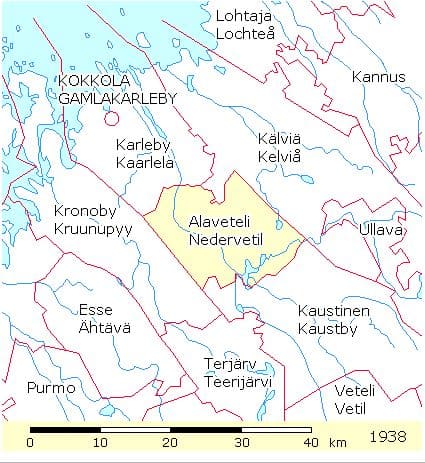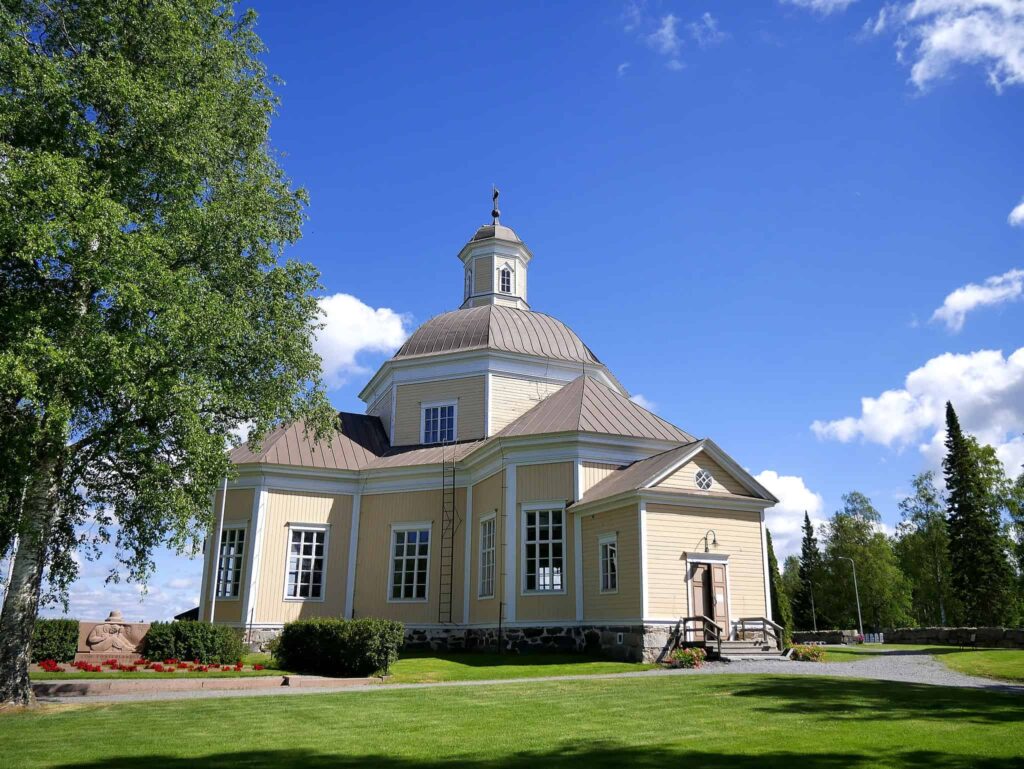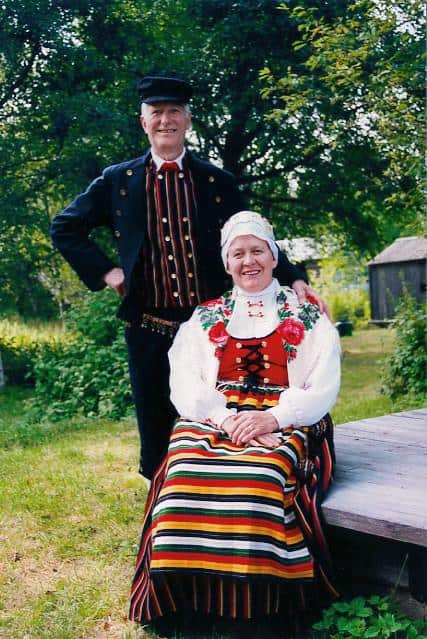Ostrobothnia
Nedervetil
Parish History
The name Nedervetil came from the man, Jöns Andersson Wettela. He was mentioned in a tax book of 1553 as a man who had 18 farmers. And a few years later, in 1556, ‘Vetil’ had divided into two parts: Nedervetela with 14 farmers and Öffervetela with 5 farmers. The communities of Nedervetil grew throughout the late 1500’s and 1600’s. 9
- In 1467, part of the land within the large parish of Pedersöre was divided and the parish of Karleby was created
- In the 1550’s, one of Karleby’s villages arose and became known as Nedervetil
- In 1752 the village of Nedervetil, along with Overby and Norrby, split from Karleby to become the chapel parish of Nedervetil
- In 1753 Nedervetil had it its own district chapel and contributed to the support of 5 pastors.
- In 1896 Nedervetil became an independent parish. 9
Parish Records
Villages and farms of Nedervetil were recorded in T.W. Karsten’s work, Svesk Bygd I Osterbotten: Nu Och Fordom. 2 Nedervetil Parish Communion records were not used to confirm these findings.
Because parish Communion records are listed by village and farm names and because farm names often were used as a part of a person’s name, it is interesting to note the following farms.
To open a printable list of villages and farms (pdf), click here.
Villages & Farms
For a very long time, the Nedervetil parish consisted of three villages: Kyrkbyn – the church village, Norrby 2, 10 and Överby.
- Simonsbacka
- Vik
- Ahlskog
- Slotte
- Bast
- Brännkärr
- Hästbacka
- Broända
- Morik
- Salo
- Mossbacka
- Pelo
- Lerbacka
- Stobacka
- Skriko
- Markusbacka
- Forsskans
- Backända
- Paasiala
- Dalbacka
- Vastersund
- Hognas
- Pirttiniemi
- Janislampi
- Haavisto
- Emmes
- Knihtila
- Jolka
- Saarukka
- Tuna
In the village of Överby
- Ollisbacka
- Tast
- Riippa
- Kaino
- Kaitfors
- Loulubacka
- Palm
- Viitavesi
- Gåsjårvi
- Gylling
Of Interest
In 1754 Jakob Chydenius, brother of Nedervetil’s chaplain Anders Chydenius, wrote about the Nedervetil residents. ‘Inhabitants are as a rule neat and clean in their houses and clothing, sober, cheerful, hard-working intelligent, polite and thriving. As farmers they are energetic foremost for their indefatigable diligence applied to the stonefields that are transformed to fertile fields.’ 9
However, poverty was great. The following years are considered to be years heavy with poverty, crop failures, wars and epidemics: 1600, 1669, 1695, 1697, 1710, 1731, 1740-42, 1821, 1867-68, 1917-19, 1940-44. Since 1750 there were 17 difficult crop failure years, 19 war years, and 14 desolate epidemic years. 9
References
- Genealogical Society of Finland, HisKi project, Nedervetil parish, http://hiski.genealogia.fi/hiski/a6lpei?en+0008
- Karsten T.W., Svesk Bygd I Osterbotten: Nu Och Fordom; Helingfors, 1923, pages 228-230
- Nedervetil, httpsÖ–sv.wikipedia.org-wiki-Nedervetil
- Nedervetil, http://www.nedervetil.fi/document.asp?id=17nvclx4q3h
- Nedervetil Church image, https://commons.wikimedia.org/wiki/File:Alaveteli_Church_2017.jpg
- Nedervetil Church video, https://youtu.be/I6y_SsPKc9M
- Nedervetil Folk Dress; https://www.brage.fi/sve/draktbyra/draktbyran/folkdrakter/view-163648-87
- Nedervetil Forsamling; http://www.nedervetilsforsamling.fi
- Skog, Helge, Nedervetil Kommun Hembygdsbok, 1958, translated by June Pelo in 1982; http://sydaby.eget.net/swe/jp_nedervetil.htm, reprinted in SFHS Quarterly journals, Vol 22 Issue #4 and Vol 23 Issue #1




